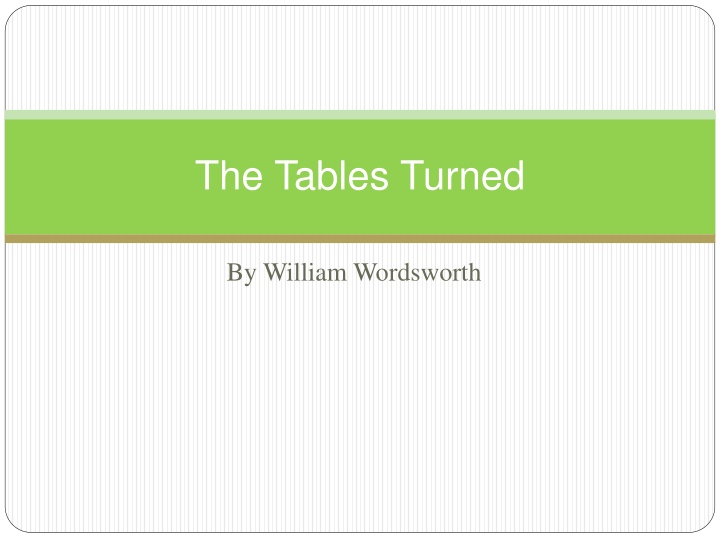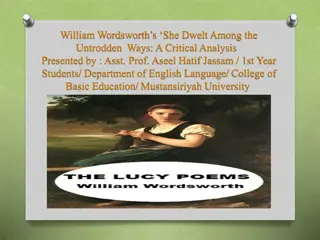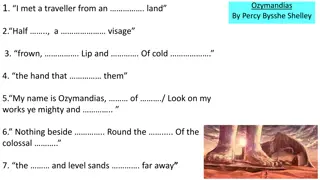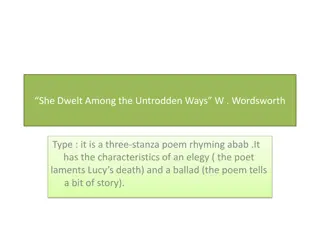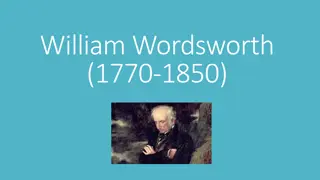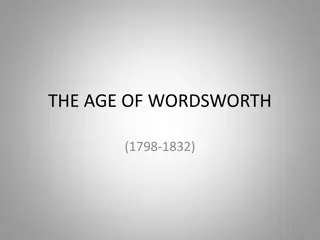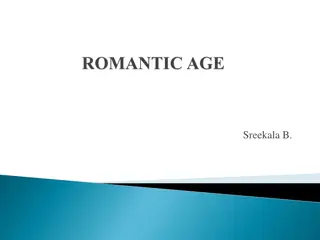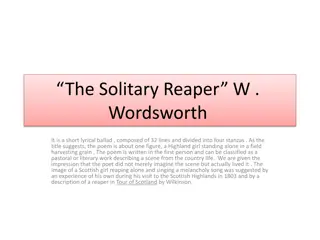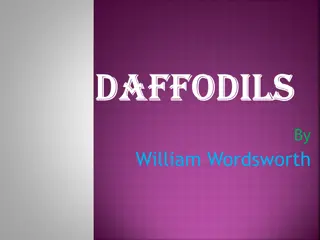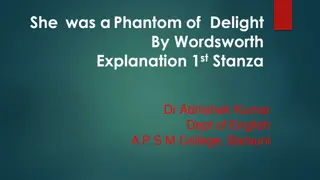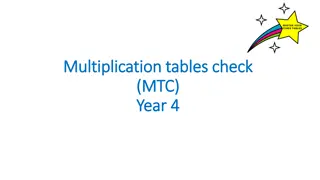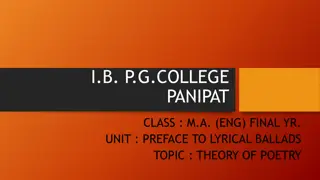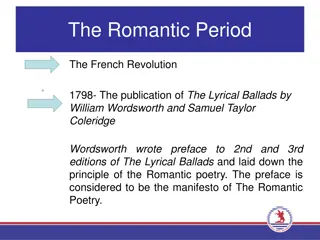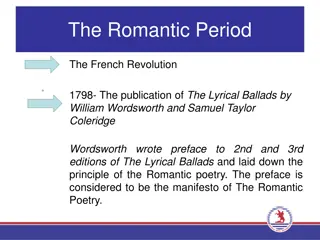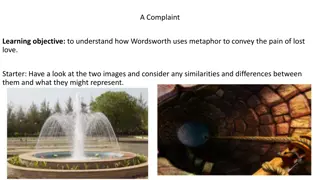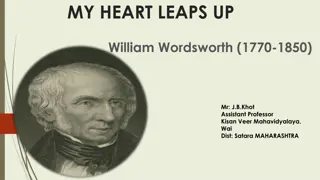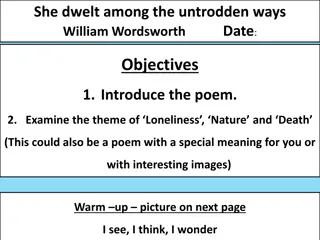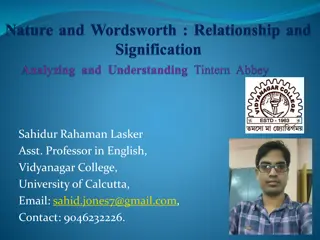Nature's Teaching: Analysis of "The Tables Turned" by William Wordsworth
The poem "The Tables Turned" by William Wordsworth encourages learning through nature and experience rather than books. It portrays a speaker urging students to embrace nature as their teacher, emphasizing the value of practical education over theoretical learning. The poem reflects Wordsworth's belief in seizing the day and highlights the superiority of nature as a teacher over conventional education methods.
Download Presentation

Please find below an Image/Link to download the presentation.
The content on the website is provided AS IS for your information and personal use only. It may not be sold, licensed, or shared on other websites without obtaining consent from the author.If you encounter any issues during the download, it is possible that the publisher has removed the file from their server.
You are allowed to download the files provided on this website for personal or commercial use, subject to the condition that they are used lawfully. All files are the property of their respective owners.
The content on the website is provided AS IS for your information and personal use only. It may not be sold, licensed, or shared on other websites without obtaining consent from the author.
E N D
Presentation Transcript
The Tables Turned By William Wordsworth
William Wordsworth He lived from 1770 to 1850 and spent most of his life in Lake District in North England. Graduated from Cambridge university. He published Lyrical Ballads in 1798. He lived during the Romantic Period
The title and Subtitle: An Evening Scene on the Same Subject The poem is a follow up to Expostulation and Reply , the poem Wordsworth published before this one. The title foreshadows a debate in the poem and how it is an ongoing debate from a previous subject.
Summary The first stanza repeats, up! up! My friend, twice, inferring that the speaker is trying to cheer up or wake up this friend. The second stanza illustrates the beautiful natural surroundings that this friend is missing out. The third and fourth stanza have references to music (woodland linnet, music, throstle sings).
The fifth stanza informs the reader, or friend, that the world has it all. The sixth claims that an impulse from a wood can teach you more than a book. The final two stanzas are different from the rest in that they are more powerful and demanding as Wordsworth proclaims, we murder to dissect .
The tables Turned The poem promotes learning through experience and living in nature. The speaker desires for students to quit their books and let Nature be your teacher Wordsworth creates a speaker that believes that there is a great deal more to be learned from experience than can ever be found in books. The poem suggests an education that is a practical one.
The poem illustrates Wordsworths view about where one should gain education. The importance of nature being the true teacher over books and science is explained to the friend/reader. The poem continually conveys the expression carpe diem, or seize the day .
Poetic devices pesonification: Let Nature be your teacher , Above the mountains head Alliteration: Toil and trouble , World of ready wealth
Stanza pattern: the poem is lyric poem which expresses emotions. It is constructed of eight ballad stanza and total of 32 lines of interlocking rhymes (abab). Each stanza flows equally except for the seventh stanza which somewhat irregular in rhythm (iambic tetrameter).
Tone: The tone that the poet uses is accusatory and somewhat instructive, passionate and optimistic. The mood/tone begins playfully when he calls Up! Up! to his friend to beg for his attention. The tone of the speaker shifts from this hopeful voice to a one forceful in the seventh stanza, when he says, we murder to dissect The last stanza changes in tone when the poet ends on a more hopeful note and asks his friend to follow his words and heart and trust as the ultimate teacher.
theme NATURE AS A TEACHER the poem shows that the education one can receive from experiencing nature is superior to the one learned from books. It persuades the listener to learn from nature and be part of it instead of the philosophy of books. It prompts people to go back to and revere what has been forgotten, nature.
